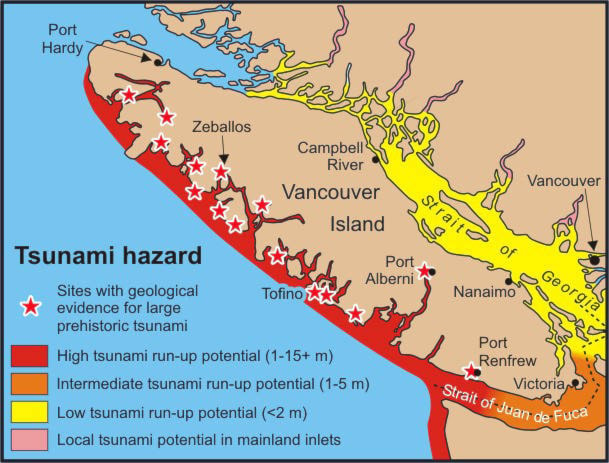If there’s a good thing to have come from last week’s tsunami scare, it’s that it seemingly set many in the region on a path to better preparedness.
When Strathcona Regional District (SRD) protective services coordinator Shaun Koopman went away to live in a camper van and drive around South America on his honeymoon early in January, there were around 1,400 households signed up to receive emergency communications through the regional Connect Rocket notification system. It had been active for more than six months.
When he got back this week, there were 4,395.
“I have to say, I kind of anticipated that,” he says.
He wasn’t totally off-grid the whole time he was gone and he’d known about the tsunami alert situation. He actually received a message from the system itself on his phone that the system was struggling to keep up and people may be experiencing a delay in being able to access it.
“There’s nothing like an event – either real or just a warning – to trigger awareness. I’m very glad that a five to 20-metre wave didn’t hit the coast of Vancouver Island, and the fact that it enhanced public awareness of the hazard and an increased ability for us to make the public aware of hazards is a good thing.”
Koopman does, however, feel there needs to be some clarification about what the system’s capabilities are, because he’s been inundated with questions since his return.
There seems to be a misconception that Connect Rocket will be used to communicate a warning before an earthquake, for example. Currently, the province of B.C. does not have an earthquake early warning system in place. Organizations such as Oceans Networks Canada and Emergency Management BC are working on getting one in place, but right now there is no capacity for such a warning.
Oceans Networks Canada also says there are currently no known means to reliably predict earthquakes, “however seismic instruments can rapidly detect an earthquake as it begins to unfold,” so even once the system is active, the “advance” warning will likely only be a minute or so.
Koopman says residents should also not expect a notification should the dam fail due to an earthquake.
“If people feel strong shaking strong enough to knock them down then they should immediately get safe by moving out of the area once the shaking stops,” Koopman says.
He would also like to apologize to those who should have received an alert last week, but didn’t. Alerts should have gone out to residents in the system’s coverage area that, should the tsunami have occurred, would have been affected.
“We had a breakdown in our processes,” Koopman admits, “which resulted in notifications not being sent through our emergency notification system to residents who lived within the warning zone on the west coast. Luckily, the warning was just that, a warning, and there were no injuries or damages and we are so thankful to the first responder community who carried out the evacuation orders.
“We would like to apologize to the communities and residents of Tahsis, Zeballos, Gold River, Nootka Island, and Kyuquot and let them know that we are taking steps to ensure it doesn’t happen again. We will be testing the system and processes in the coming weeks.”
The first round of that testing will take place Monday at 10 a.m., so residents who are signed up can expect their phones to go off.
It’ll be clear that it’s just a test, Koopman says, and they’ll be sending notifications out to all 10 of their regions, so anyone signed up to receive alerts from every area will receive at least 10 test calls or messages.
The system also needs internet connectivity in order to work, Koopman says, so if a disaster takes that away, information will need to go out over the airwaves.
And while his team of amateur radio operators is ready to step in and help out, he could still use some more people with radios and the training to use them.
The Strathcona Emergency Program is running another round of radio certification courses throughout April, and anyone interested in getting involved can contact Koopman at skoopman@srd.ca or 250-830-6702.
